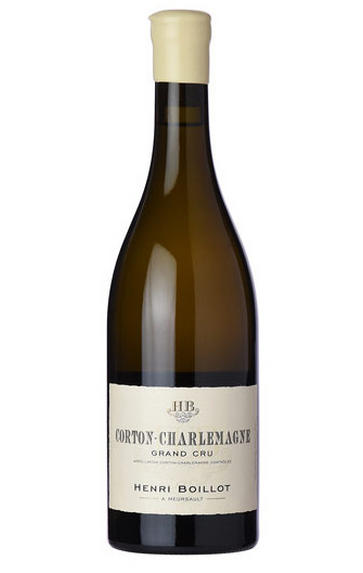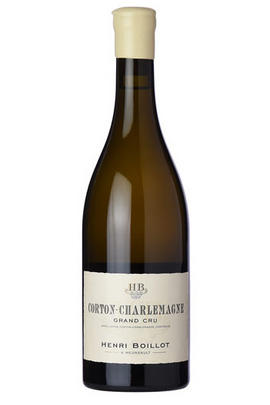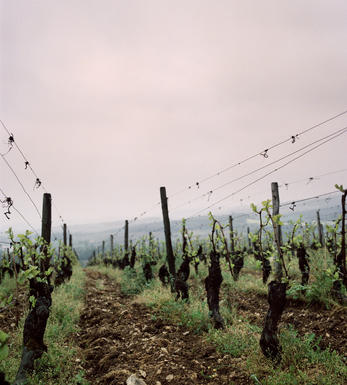
2019 Corton-Charlemagne, Grand Cru, Henri Boillot, Burgundy

Critics reviews
Here too, the nose is quasi-Chablis-like with similar nuances of iodine, mineral reduction, oyster shell, and various citrus influences. The sleek and almost painfully intense broad-shouldered flavours flash plenty of minerality on the dense, muscular and bone-dry finale that leaves zero doubt that this will need extended patience if you're to see it at its peak.
This youthfully austere effort has the length to burn, and it's not every day that you encounter a Corton-Charlemagne that can go head-to-head with a great Chevalier, but this one can.
Drink from 2036 onward
Allen Meadows, Burghound.com (June 2021)
About this WINE

Henri Boillot
Henri Boillot has in a very short space of time build an extraordinary reputation for the sheer quality of his Burgundy wines. To call the the Henri Boillot label a mini-negoce does the wines a great disservice as, although Henri does not own the vineyards from which the grapes are sourced, he farms them as meticulously as if they were is own.
They are only ‘mini’ perhaps in the tiny levels of wine produced from each appellation. The meticulous and elegant Henri Boillot also owns and manages the Domaine founded by his grandfather. The sheer quality of these wines, including the impressive and exclusive Les Mouchères monopole, is testimony to the assiduous work he has done in both the vineyards and cellar.
Herni's wines inlcude several Premier Crus from Meursault (Les Poruzots, Les Charmes, Les Genevrières, Les Perrières), Puligny Montrachet (les Folatières, les Perrières, les Pucelles, les Mouchères), Chassagne-Montrachet (Chevenottes, Embrazees), Volnay and Savigny-les-Beaune.

Corton-Charlemagne
There are two specific Charlemagne vineyards, En Charlemagne and Le Charlemagne, making up half the Corton-Charlemagne appellation, while white grapes grown in seven other vineyards (see list below) may also be sold as Corton-Charlemagne. As a result there can be a wide divergence in style between a south-facing location such as Pougets, which needs picking right at the start of the harvest, and the western slopes in Pernand-Vergelesses which might be picked several weeks later. The underlying similarity though comes from the minerality of the soil.
En Charlemagne lies at the border with Aloxe-Corton. The hillside faces west and fine, racy white wines can be made, but the Grand Cru appellation has been extended right up to the village of Pernand itself, by which time the exposition is north-west and the valley has become noticeably more enclosed. The final sector was only promoted in 1966, and probably should not have been.
Le Charlemagne is the absolute heartland of the appellation, facing south-west, thus avoiding the risk of over-ripeness which can afflict the vines exposed due south. If I had Corton-Charlemagne vines here I would be tempted to let the world know by labelling the wine as Corton-Charlemagne, Le Charlemagne.
Two producers to my knowledge also have some Pinot Noir planted here – Follin-Arbelet and Bonneau du Martray. Both make attractive wines but neither, to my mind, justifies Grand Cru status for red wine, lacking the extra dimensions of flavour one hopes for at the highest level. This is not the producers’ fault, but a reflection of the terroir.

Chardonnay
Chardonnay is often seen as the king of white wine grapes and one of the most widely planted in the world It is suited to a wide variety of soils, though it excels in soils with a high limestone content as found in Champagne, Chablis, and the Côte D`Or.
Burgundy is Chardonnay's spiritual home and the best White Burgundies are dry, rich, honeyed wines with marvellous poise, elegance and balance. They are unquestionably the finest dry white wines in the world. Chardonnay plays a crucial role in the Champagne blend, providing structure and finesse, and is the sole grape in Blanc de Blancs.
It is quantitatively important in California and Australia, is widely planted in Chile and South Africa, and is the second most widely planted grape in New Zealand. In warm climates Chardonnay has a tendency to develop very high sugar levels during the final stages of ripening and this can occur at the expense of acidity. Late picking is a common problem and can result in blowsy and flabby wines that lack structure and definition.
Recently in the New World, we have seen a move towards more elegant, better- balanced and less oak-driven Chardonnays, and this is to be welcomed.


Buying options
Add to wishlist
Description
Here too, the nose is quasi-Chablis-like with similar nuances of iodine, mineral reduction, oyster shell, and various citrus influences. The sleek and almost painfully intense broad-shouldered flavours flash plenty of minerality on the dense, muscular and bone-dry finale that leaves zero doubt that this will need extended patience if you're to see it at its peak.
This youthfully austere effort has the length to burn, and it's not every day that you encounter a Corton-Charlemagne that can go head-to-head with a great Chevalier, but this one can.
Drink from 2036 onward
Allen Meadows, Burghound.com (June 2021)
wine at a glance
Delivery and quality guarantee